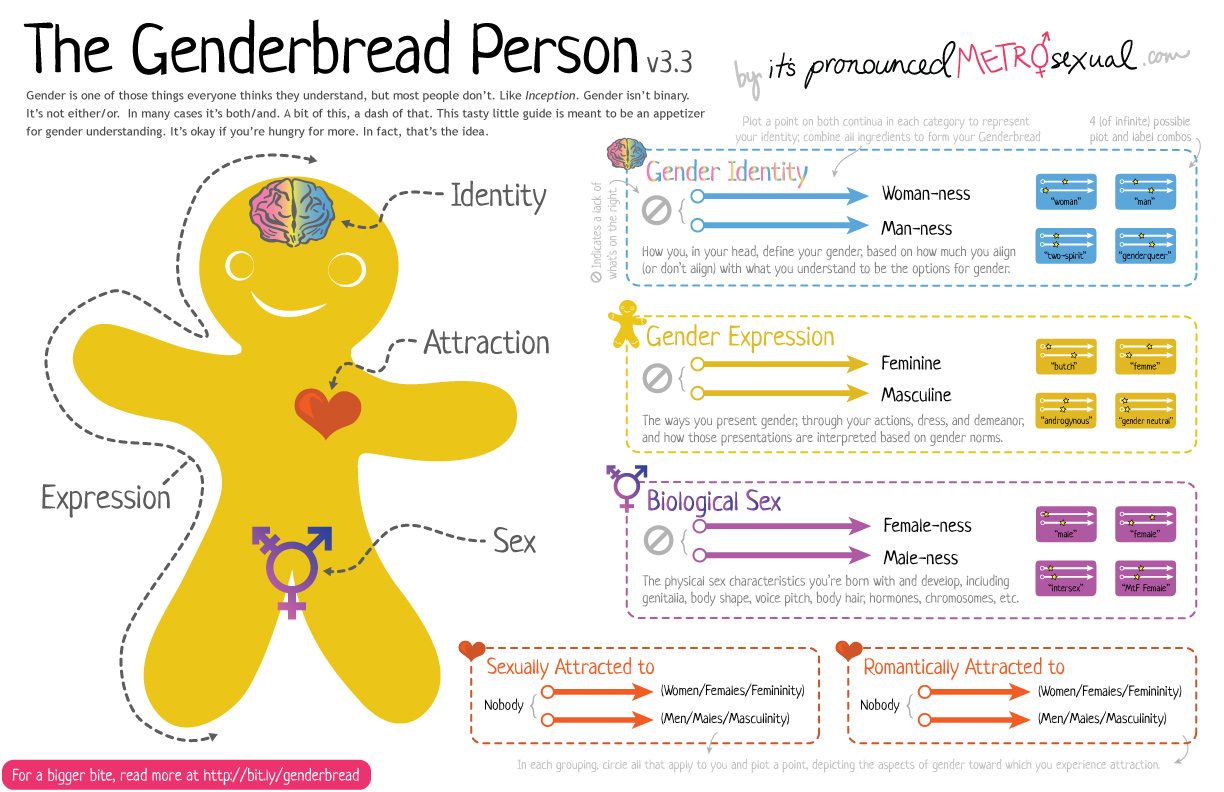< Return to Trans Guernsey

When discussing trans related topics it is important to explain the differences between biological sex, gender identity, gender expression and sexual orientation. All these categories exist in their own right. Nowadays it is more commonly recognised that they also exist on their own spectrums.
Sex
The classification of people as male or female. At birth infants are assigned a sex, usually based on the appearance of their external anatomy. (This is what is written on the birth certificate.) However, a person’s sex is actually a combination of bodily characteristics including: chromosomes, hormones, internal and external reproductive organs, and secondary sex characteristics. For the majority of people, these tend to occur in two typical patterns (male and female), however some people have a different combination, and this is called intersex.
Gender Identity
One’s internal, deeply held sense of one’s gender. For transgender people, their own internal gender identity does not match the sex they were assigned at birth. Most people have a gender identity of man or woman (or boy or girl). This is usually assigned at birth depending upon the shape of genitalia i.e. an individual with male-typical genitalia is assigned the gender ‘boy’ and then later ‘man’, while an individual with female-typical genitalia is assigned the gender ‘girl’ and then later ‘woman’. For the majority of people the assigned gender matches their internal gender identity. These people are called ‘cisgender’; transgender people on the other hand experience a gender identity which does not match that assigned to them at birth. For some people, their gender identity does not fit neatly into the two primary genders at all. Unlike gender expression (see below) gender identity is not visible to others.
Gender Expression
External manifestations of gender, expressed through one’s name, pronouns, clothing, hair style, behaviour, voice, or body characteristics. Society identifies these cues as masculine and feminine, although what is considered masculine and feminine changes over time and varies by culture. Typically, transgender people seek to make their gender expression align with their gender identity, rather than the sex they were assigned at birth.
Sexual & Romantic Orientation
Describes an individual’s enduring physical, romantic and/or emotional attraction to another person. Gender identity and sexual orientation are not the same. Transgender people may be straight, lesbian, gay, or bisexual. For example, a person who transitions from male to female and is attracted solely to men would identify as a straight woman.


